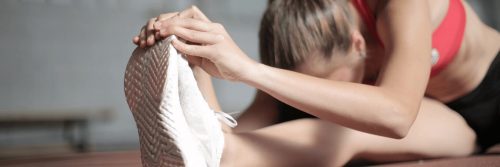When you think about it, your health and vitality depend on you being able to get up and move throughout your life. Every step you take relies on your feet being happy. Your feet carry the load, take the first impact and stabilise every step you take. If you want to dance at your grandkids’ weddings, explore the world on a senior’s ticket, skip to the loo ‘til you’re 90! Yes, it’s worth looking after your feet with a few simple strategies:
Step-by-step guide:
- Cushion the impact: Did you know that the only place on your body guaranteed to lose body fat as you get older, is the fatty pads on your feet? Give comfort to your soles, by wearing shoes or sandals with a minimum sole thickness of 5mm and a 15mm heel height.
- Ditch the thongs: No matter how thick and spongy they feel; they offer no support, and your toes have to ‘claw’ to keep them on. Avoid wearing them for walking or standing for longer than 10 minutes.
- Pay attention to callouses: If your favourite pair of shoes are rubbing, it can quickly cause hard patches of skin to form. Callouses and resulting corns can cause inflammation which leads to arthritis—the kind of pain which can stop you walking as you get older.
- Don’t squeeze: Shoes, sandals or boots that are too tight across the front of your feet, or too short, can cause painful bunions, hammertoes and other deformities of your joints. Make sure you buy the right size shoes for you, in styles that suit your foot shape.
- Stretch your calves: Tight calf muscles can lead to painful plantar fasciitis (inflammation of the tissue under your feet and heels), one of the most common and hard to remedy foot complaints suffered in Australia. Sidestep the agony by keeping your calf muscles long and limber. One simple calf stretch: rest your hands on a kitchen counter for balance, bend one knee in front of you at 90 degrees and keeping both feet flat on the floor, slide your other leg behind you until you feel a stretch in your calf. Hold for 20 seconds and stretch the other calf. Repeat (two stretches on each leg).
- Don’t tolerate pain: Having pain in one foot or both will make you walk, stand or run slightly differently to avoid it. This has an insidious domino effect that leads to potentially more painful imbalances throughout your musculoskeletal system. If you have foot pain or persistent callouses, ask your GP for a referral to a podiatrist, or visit and click on Find a podiatrist.
- Practice standing evenly on both feet: Whenever you’re standing (cooking, queuing, at a cocktail party) practice standing with your weight evenly distributed through your soles, heels, toes and outside edges of your feet. If you can do this easily, without your feet collapsing inwards, take up yoga—standing poses are great for improving your balance, and yoga stretches will keep your calves limber. If you find standing evenly hard to maintain, you may need to strengthen your core and postural muscles—a good Pilates teacher can make a huge difference to your life and soles.







